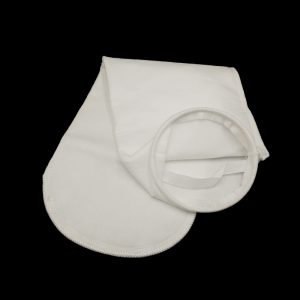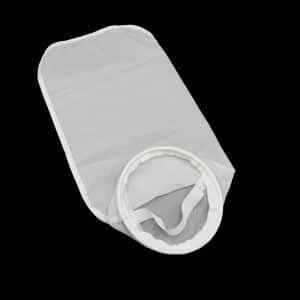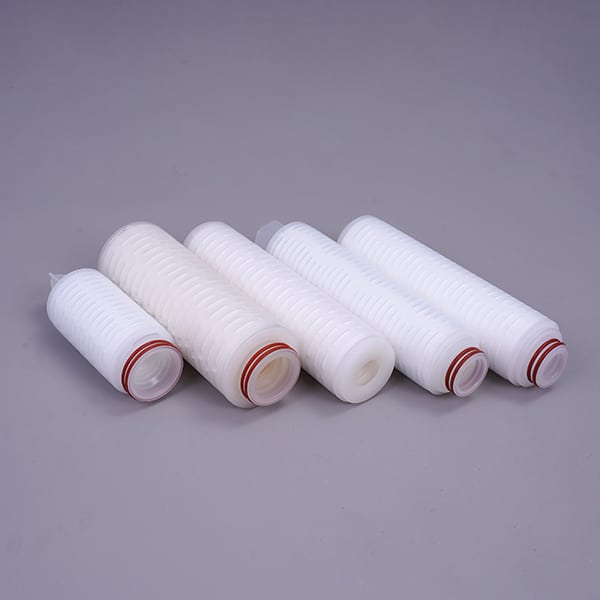
Ultimate Guide to Liquid Filter Bags: Everything You Need to Know for Optimized Filtration
Liquid filter bags play a critical role in a wide range of industrial applications, providing an effective and economical solution for filtering liquids and removing impurities. Whether you’re a business looking to source high-quality filter bags or an individual wanting to understand the nuances of filtration, this comprehensive guide will cover everything you need to know about liquid filter bags. We’ll delve into the various types, materials, applications, and the best practices for choosing the right supplier and manufacturer. Additionally, we’ll explore price points, wholesale options, and how to ensure you’re getting the best deal on your liquid filter bag needs.
Chapter 1: Understanding Liquid Filter Bags
1.1 What is a Liquid Filter Bag?
A liquid filter bag is a filtration device that is used to remove solid particles from liquids. These bags are designed to fit into filtration systems, typically within a filter housing, where the liquid is passed through the bag to capture impurities. The effectiveness of a liquid filter bag depends on its material, size, and micron rating, which determines the size of particles it can filter.
Liquid filter bags are essential in industries such as:
- Water Treatment: Removing contaminants from water to make it safe for consumption or further processing.
- Food and Beverage: Ensuring the purity of products like juices, oils, and alcoholic beverages.
- Pharmaceuticals: Filtering out impurities in the production of medicines and other healthcare products.
- Chemical Processing: Protecting equipment and ensuring product quality by removing unwanted particles from chemicals.
- Oil and Gas: Filtering hydraulic fluids, lubricants, and other process liquids to maintain equipment efficiency and product integrity.
1.2 How Does a Liquid Filter Bag Work?
To understand how liquid filter bags work, it’s important to grasp the basic filtration process:
- Installation: The filter bag is placed inside a filter housing, with the open end of the bag securely attached to prevent unfiltered liquid from bypassing the bag.
- Filtration: As the liquid flows into the housing, it is forced through the filter bag. The bag’s material captures solid particles while allowing the filtered liquid to pass through.
- Maintenance: Over time, the filter bag accumulates particles, which can reduce its efficiency. Regular maintenance involves replacing the bag or, in some cases, cleaning it for reuse.
1.3 Benefits of Using Liquid Filter Bags
Liquid filter bags offer several advantages:
- Cost-Effectiveness: They are generally cheaper than other filtration methods.
- Ease of Use: Simple to install and replace.
- Versatility: Available in a variety of sizes and materials, making them suitable for different applications.
- Efficiency: Capable of filtering out a wide range of particle sizes, depending on the micron rating.
Chapter 2: Types and Kinds of Liquid Filter Bags
2.1 Different Liquid Filter Bag Types
There are many different types of liquid filter bags, each designed for specific filtration needs. Understanding these types will help you choose the right one for your application:
- 1 Micron Water Filter Bag: These are used for very fine filtration, capturing particles as small as 1 micron. They are essential in processes where even the smallest contaminants must be removed, such as in pharmaceutical manufacturing or ultra-pure water production.
- 5 Micron Water Filter Bag: Slightly coarser than the 1 micron bag, these are used when larger particles can be tolerated, but still need to be filtered out. They are common in general water treatment and other liquid processes.
- Mesh Liquid Filter Bag: Made from woven fabric, these bags are designed for applications requiring high flow rates and lower filtration precision. They come in various mesh sizes, providing flexibility in filtration efficiency.
- Liquid PP Filter Bag: Constructed from polypropylene, these bags offer excellent chemical resistance and durability, making them suitable for a wide range of industrial applications.
- Polypropylene Mesh Filter Bag: Combining the strength of polypropylene with the high flow capabilities of mesh bags, these are often used in chemical processing and other demanding environments.
2.2 Liquid Filter Bag Kinds
Liquid filter bags can also be categorized by their construction and intended use:
- Standard Felt Filter Bags: Made from needle-punched felt, these bags are the most common and are used in applications where depth filtration is needed.
- High-Flow Filter Bags: Designed for high flow rates, these bags have a larger surface area and can handle higher volumes of liquid.
- Extended Life Filter Bags: Made from higher quality materials, these bags are designed to last longer, reducing the frequency of replacements.
- Oil Adsorbing Filter Bags: Specifically designed to remove oils from liquids, these bags are used in industries such as automotive and metalworking.
2.3 Liquid Filter Bag Sizes
Liquid filter bags come in various sizes, allowing you to choose the right one for your specific needs. Common sizes include:
- Size 1: Typically 7 inches in diameter and 16.5 inches in length, with a filtration area of approximately 0.5 square meters.
- Size 2: Measures 7 inches in diameter and 32 inches in length, offering a filtration area of about 1 square meter.
- Size 3: Smaller size, around 4 inches in diameter and 8 inches in length, used for smaller volume applications.
- Size 4: Similar to size 3 but slightly longer, ideal for applications requiring a bit more filtration capacity.
Choosing the correct size is crucial as it directly impacts the filtration efficiency and the flow rate of the liquid through the system.
Chapter 3: Materials of Liquid Filter Bags
3.1 Common Materials Used in Liquid Filter Bags
The materials used in liquid filter bags are critical to their performance and durability. The most common materials include:
- Polypropylene (PP): Known for its chemical resistance, polypropylene is one of the most commonly used materials for liquid filter bags. It can withstand harsh environments and high temperatures, making it suitable for a wide range of industrial applications.
- Nylon: Offering excellent abrasion resistance, nylon filter bags are ideal for filtering fine particles. Nylon’s high tensile strength makes it suitable for applications requiring durability and longevity.
- Polyester: Versatile and durable, polyester is resistant to a wide range of chemicals and is commonly used in the food and beverage industry.
- Cotton: Although less durable and chemical-resistant than synthetic materials, cotton is biodegradable and environmentally friendly, making it a good choice for less demanding applications.
3.2 Specialty Materials
In addition to the common materials, there are also specialty materials used in specific applications:
- Teflon (PTFE): Offers exceptional chemical resistance and high-temperature stability, making it suitable for highly corrosive environments.
- Nomex: Used in high-temperature applications, Nomex filter bags are resistant to degradation and can withstand temperatures up to 400°F.
- Fiberglass: Another material used in high-temperature environments, fiberglass is durable and offers good chemical resistance.
Choosing the right material is crucial as it affects the filter bag’s compatibility with the liquid being filtered, as well as its overall lifespan.
Chapter 4: Applications of Liquid Filter Bags
4.1 General Applications
Liquid filter bags are used in a variety of industries to ensure the purity and quality of liquids:
- Water Treatment: In both municipal and industrial water treatment plants, liquid filter bags remove contaminants, ensuring the water is safe for consumption or further processing.
- Food and Beverage: From juice production to brewing beer, liquid filter bags play a crucial role in ensuring that the final product is free from impurities.
- Pharmaceuticals: In the pharmaceutical industry, the purity of liquids is paramount. Liquid filter bags are used to remove particulate contaminants that could compromise the quality of the final product.
- Chemical Processing: In chemical processing plants, liquid filter bags are used to filter out unwanted particles from chemicals, protecting equipment and ensuring product quality.
- Oil and Gas: In the oil and gas industry, liquid filter bags are used to filter hydraulic fluids, lubricants, and other process liquids, ensuring that the equipment operates efficiently and reliably.
4.2 Specialized Applications
In addition to general industrial applications, liquid filter bags are also used in more specialized settings:
- Metalworking: Removing metal particles from cutting fluids and other liquids used in metalworking processes.
- Automotive: Filtering oils, coolants, and other liquids used in automotive manufacturing and maintenance.
- Textiles: Ensuring the purity of dyes and other liquids used in textile production.
4.3 Environmental Applications
Liquid filter bags also play a role in environmental protection by filtering out pollutants and contaminants from wastewater before it is discharged into the environment. This helps industries comply with environmental regulations and reduce their impact on the planet.
Chapter 5: Choosing a Liquid Filter Bag Supplier
5.1 What to Look for in a Supplier
Finding the right liquid filter bag supplier is essential for ensuring you get high-quality products that meet your needs. Here’s what to consider:
- Reputation: Look for suppliers with a solid reputation in the industry. Check reviews, ask for references, and consider their track record.
- Quality Assurance: Ensure the supplier follows strict quality control measures and that their products meet industry standards.
- Variety: A good supplier should offer a wide range of liquid filter bag types, sizes, and materials.
- Customer Support: Reliable customer support is crucial for resolving any issues that may arise.
- Delivery and Logistics: Consider suppliers with efficient delivery systems that can meet your deadlines.
5.2 Finding a Cheap Liquid Filter Bag Supplier
While price is important, it shouldn’t come at the expense of quality. However, there are ways to find a cheap liquid filter bag supplier without compromising on the product:
- Bulk Purchases: Many suppliers offer discounts for bulk purchases. If you can, buy in larger quantities to save money.
- Wholesale Options: Some suppliers offer liquid filter bag wholesale options, which can significantly reduce the per-unit cost.
- Negotiation: Don’t hesitate to negotiate the price, especially if you’re a long-term customer or buying in bulk.
- Direct from Manufacturer: Buying directly from a liquid filter bag manufacturer can often save you money compared to purchasing from a distributor.
Chapter 6: Liquid Filter Bag Manufacturers and Factories
6.1 Choosing the Right Manufacturer
Selecting the right liquid filter bag manufacturer is just as important as choosing the right supplier. Here’s what to look for:
- Experience: A manufacturer with a long history in the industry is more likely to produce high-quality products.
- Innovation: Look for manufacturers that invest in research and development to continuously improve their products.
- Customization: Some manufacturers offer customization options, allowing you to get filter bags that meet your exact specifications.
- Compliance: Ensure the manufacturer complies with relevant industry standards and regulations.
6.2 Understanding the Role of a Liquid Filter Bag Factory
A liquid filter bag factory is where the manufacturing process takes place. The capabilities of the factory can significantly impact the quality of the final product:
- Production Capacity: A factory with high production capacity can meet large orders and deliver them on time.
- Quality Control: Factories with rigorous quality control processes are more likely to produce consistent, high-quality products.
- Technological Advancements: A factory that uses modern equipment and technology can produce more precise and durable filter bags.
Chapter 7: Pricing and Wholesale Options
7.1 Liquid Filter Bag Price Factors
Several factors influence the liquid filter bag price:
- Material: The type of material used is a major factor. For example, Teflon or Nomex bags are typically more expensive than polypropylene or nylon bags.
- Size: Larger filter bags generally cost more due to the increased amount of material required.
- Micron Rating: Bags with finer micron ratings (e.g., 1 micron) are often more expensive because they require more precise manufacturing processes.
- Brand: Well-known brands may charge more for their products, but they often offer higher quality and better warranties.
- Customization: Custom orders may be more expensive, especially if they involve unique materials or sizes.
7.2 Liquid Filter Bag Wholesale Options
Buying in bulk or through wholesale channels can provide significant savings:
- Direct from Manufacturer: Many manufacturers offer wholesale prices to businesses that buy directly from them.
- Distributor Discounts: Distributors often provide discounts for bulk purchases, making it more affordable to stock up on liquid filter bags.
- Long-Term Contracts: Entering into a long-term contract with a supplier or manufacturer can lock in lower prices over time.
Chapter 8: Best Practices for Using Liquid Filter Bags
8.1 How to Use Liquid Filter Bags
Using liquid filter bags correctly ensures optimal filtration and extends the life of your filtration system:
- Correct Installation: Make sure the filter bag is properly installed in the housing, with a secure seal to prevent bypassing.
- Monitor Flow Rate: Keep an eye on the flow rate. A decrease can indicate that the bag is full and needs to be replaced.
- Regular Maintenance: Replace or clean filter bags regularly to maintain filtration efficiency.
- Proper Storage: Store unused filter bags in a clean, dry place to prevent contamination.
8.2 Maintenance Tips
Regular maintenance is key to ensuring your liquid filter bags work effectively:
- Regular Inspections: Check filter bags for signs of wear or damage during regular maintenance intervals.
- Proper Disposal: Dispose of used filter bags according to your local environmental regulations.
- Record Keeping: Keep records of when filter bags are replaced to track usage and optimize your maintenance schedule.
Chapter 9: Conclusion
Liquid filter bags are a vital component in many industrial processes, ensuring the purity and quality of liquids by filtering out unwanted particles. Understanding the different types, materials, and applications of liquid filter bags is crucial for selecting the right product for your needs. Whether you’re looking for a reliable supplier, a reputable manufacturer, or the best wholesale deals, this guide provides the insights needed to make an informed decision.
By following the best practices outlined in this guide, you can maximize the efficiency of your filtration system, reduce downtime, and ensure that your liquids are consistently clean and free of contaminants. Whether you’re in water treatment, food and beverage, pharmaceuticals, or any other industry that requires liquid filtration, the right liquid filter bag can make all the difference.




